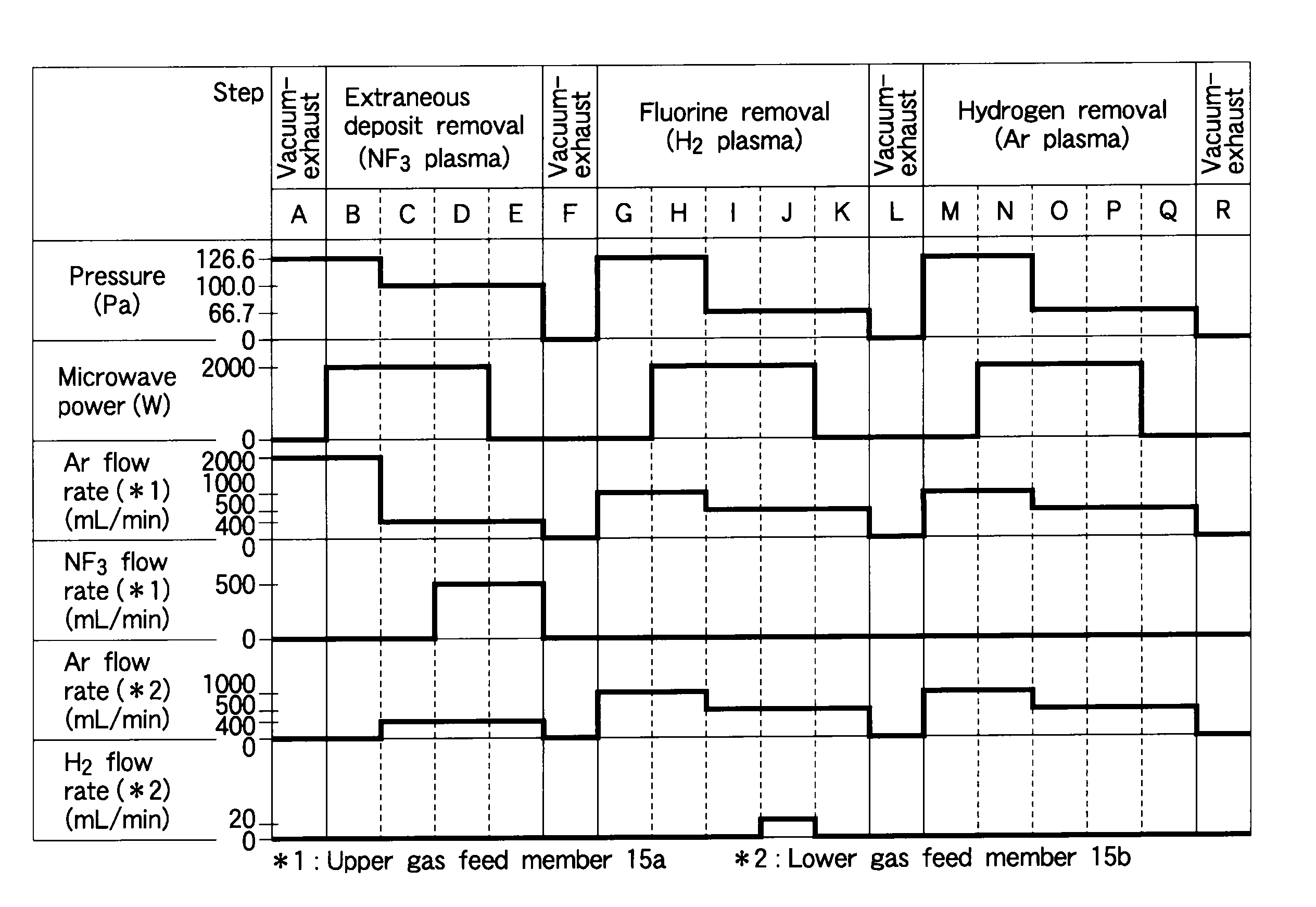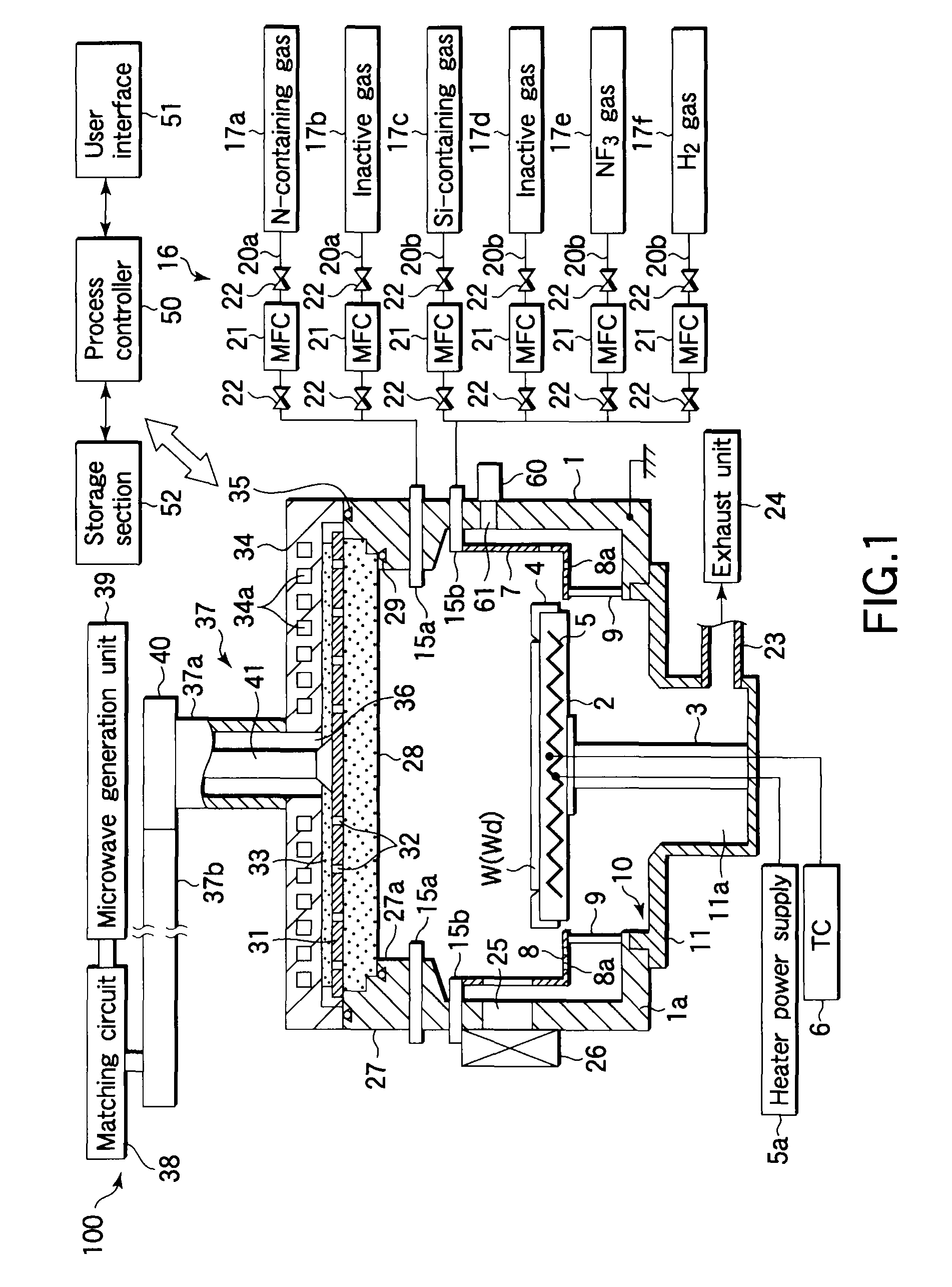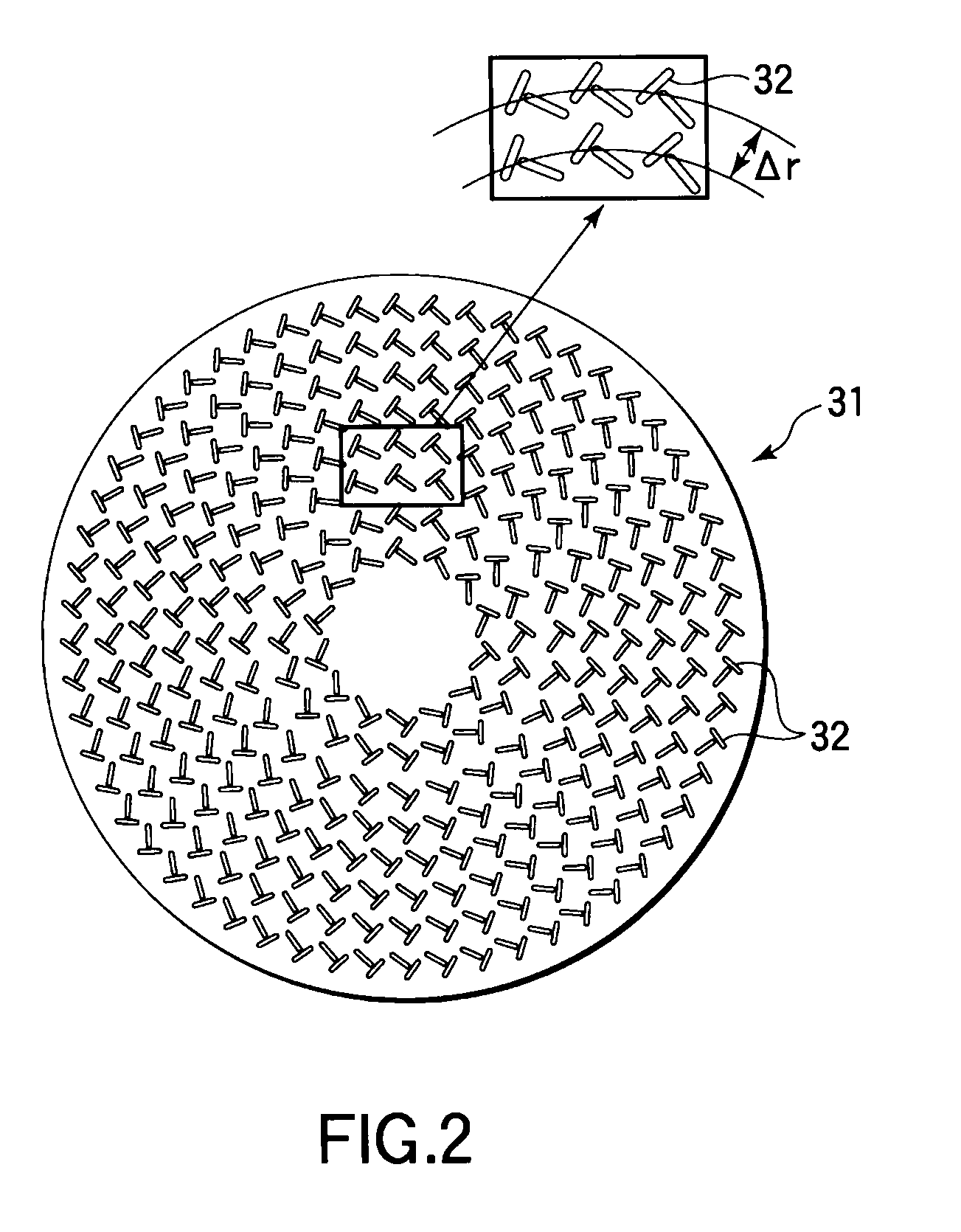Plasma cleaning method and plasma CVD method
a cleaning method and plasma technology, applied in the field of plasma cleaning method and plasma cvd method, can solve the problems of insufficient studies concerning the conditions of performing the cleaning process at high throughput to achieve the cleaning effect practically sufficient, adversely affect the film formation performed in the plasma cvd apparatus, and deteriorate the film formation rate and/or film formation uniformity, etc., to achieve the effect of improving the uniformity of the plasma cvd process, high throughput and high throughpu
- Summary
- Abstract
- Description
- Claims
- Application Information
AI Technical Summary
Benefits of technology
Problems solved by technology
Method used
Image
Examples
Embodiment Construction
[0035]An embodiment of the present invention will now be described in detail with reference to the accompanying drawings. FIG. 1 is a sectional view schematically showing an example of a plasma processing apparatus suitable for performing a plasma cleaning method and a plasma CVD method according to the present invention. This plasma processing apparatus 100 is arranged as a processing apparatus of the RLSA (Radial Line Slot Antenna) microwave plasma type, in which microwaves are supplied from a planar antenna having a plurality of slots into a process chamber to generate plasma. In this case, microwave excitation plasma is generated with a high density and a low electron temperature, such as a plasma density of 1×1010 to 5×1012 / cm3 and a low electron temperature of 0.7 to 2 eV, and so a process can be performed with very little damage to the film. Accordingly, apparatuses of this type are preferably utilized for processes, such as formation of a silicon nitride film by plasma CVD, ...
PUM
| Property | Measurement | Unit |
|---|---|---|
| temperature | aaaaa | aaaaa |
| temperature | aaaaa | aaaaa |
| inner pressure | aaaaa | aaaaa |
Abstract
Description
Claims
Application Information
 Login to View More
Login to View More - R&D
- Intellectual Property
- Life Sciences
- Materials
- Tech Scout
- Unparalleled Data Quality
- Higher Quality Content
- 60% Fewer Hallucinations
Browse by: Latest US Patents, China's latest patents, Technical Efficacy Thesaurus, Application Domain, Technology Topic, Popular Technical Reports.
© 2025 PatSnap. All rights reserved.Legal|Privacy policy|Modern Slavery Act Transparency Statement|Sitemap|About US| Contact US: help@patsnap.com



